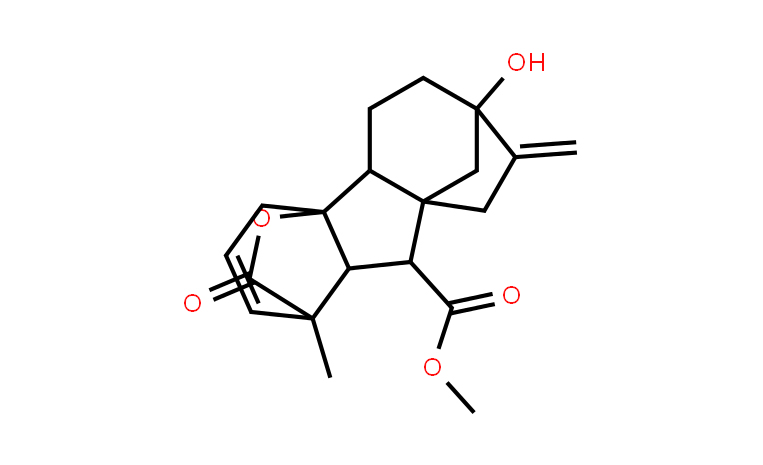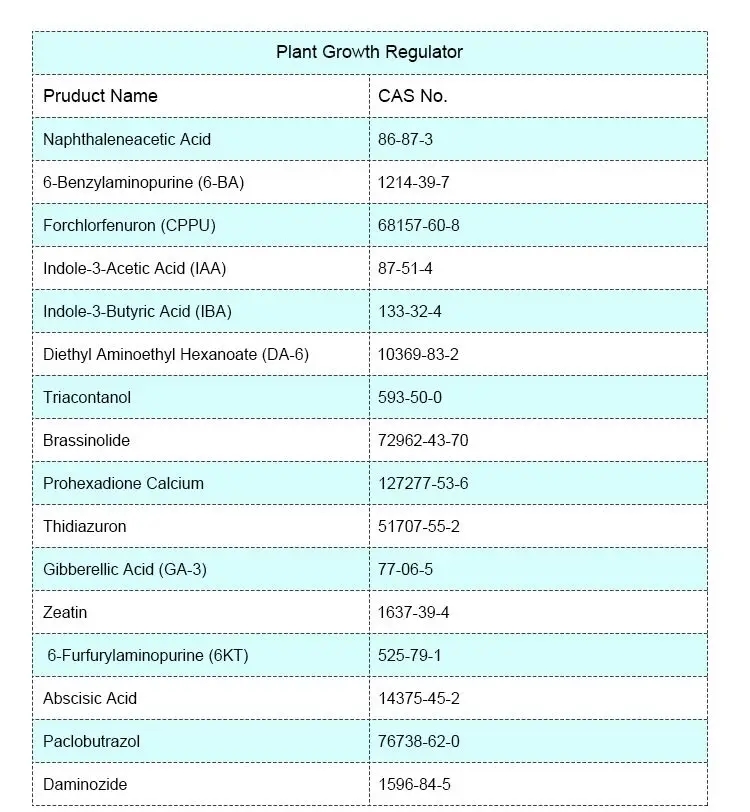Gibberellic acid (GA) is a plant hormone that plays a crucial role in the regulation of various physiological processes in plants, including seed germination, stem elongation, and flowering. Chemically, gibberellic acid belongs to the class of gibberellins, which are a group of diterpenoid compounds.
Chemical Structure of Gibberellic Acid:
The chemical structure of gibberellic acid consists of a tetracyclic diterpenoid skeleton. It has a complex structure with several rings and functional groups. The basic structure includes three fused cyclohexane rings and one cyclopentane ring. The molecular formula of gibberellic acid is C19H22O6.
Physical Properties of Gibberellic Acid:
Appearance: Gibberellic acid is typically a white to pale-yellow crystalline powder.
Melting Point: The melting point of Gibberellic acid is around 223-225°C.
Solubility: It is sparingly soluble in water but soluble in organic solvents such as ethanol and acetone.
Stability: Gibberellic acid is sensitive to heat and light; therefore, it should be stored in a cool, dark place.

Biological Role of Gibberellic Acid:
Gibberellic acid is involved in various plant growth processes, including:
Seed Germination: It promotes seed germination by breaking dormancy and allowing the embryo to develop.
Stem Elongation: Gibberellic acid stimulates stem elongation, leading to increased plant height.
Flowering: It influences the transition from the vegetative to the reproductive phase, promoting flowering.
It’s important to note that gibberellic acid is not only found in plants but can also be synthesized for agricultural purposes, where it is used as a plant growth regulator to manipulate plant growth and development.
Please let me know if you need more specific information or if there’s anything else I can help you with!
Potential benefits of Gibberellic Acid
Gibberellic Acid (GA) is a plant hormone that plays a crucial role in various physiological processes in plants. Some potential benefits of Gibberellic Acid include:
Stimulating Seed Germination: Gibberellic Acid promotes seed germination by breaking dormancy and encouraging the initiation of growth processes in seeds.
Increased Stem Elongation: Gibberellic Acid promotes cell elongation, leading to increased stem length. This can be particularly useful in certain crops where taller plants are desirable.
Fruit Growth and Development: Gibberellic Acid is involved in fruit growth and development. It can enhance fruit size, improve fruit shape, and promote uniform ripening.
Bolting Prevention: In some plants, Gibberellic Acid application can help prevent premature flowering and bolting, which is essential for crops that are grown for their foliage rather than flowers.
Breaking Dormancy in Tubers and Bulbs: Gibberellic Acid is used to break dormancy in tubers and bulbs, promoting earlier and more uniform sprouting.
Promoting Flowering in Long-Day Plants: Some plants require specific day-length conditions for flowering. Gibberellic Acid can be used to induce flowering in long-day plants under non-optimal conditions.

Improving Fruit Set: Gibberellic Acid may enhance the setting of fruits by promoting proper pollination and fertilization processes.
Thinning Fruit Clusters: Gibberellic Acid can be applied to thin out excess fruit clusters, ensuring that the remaining fruits receive adequate nutrients for optimal development.
Delaying Senescence: Gibberellic Acid can delay the aging and senescence of certain plant tissues, extending the productive life of plants.
Enhancing Crop Yield: Overall, by influencing various growth and developmental processes, Gibberellic Acid has the potential to improve crop yield and quality.
It’s important to note that the effectiveness of Gibberellic Acid can vary among different plant species and under different environmental conditions. Additionally, proper application methods and concentrations should be considered to achieve the desired results without negative side effects.
